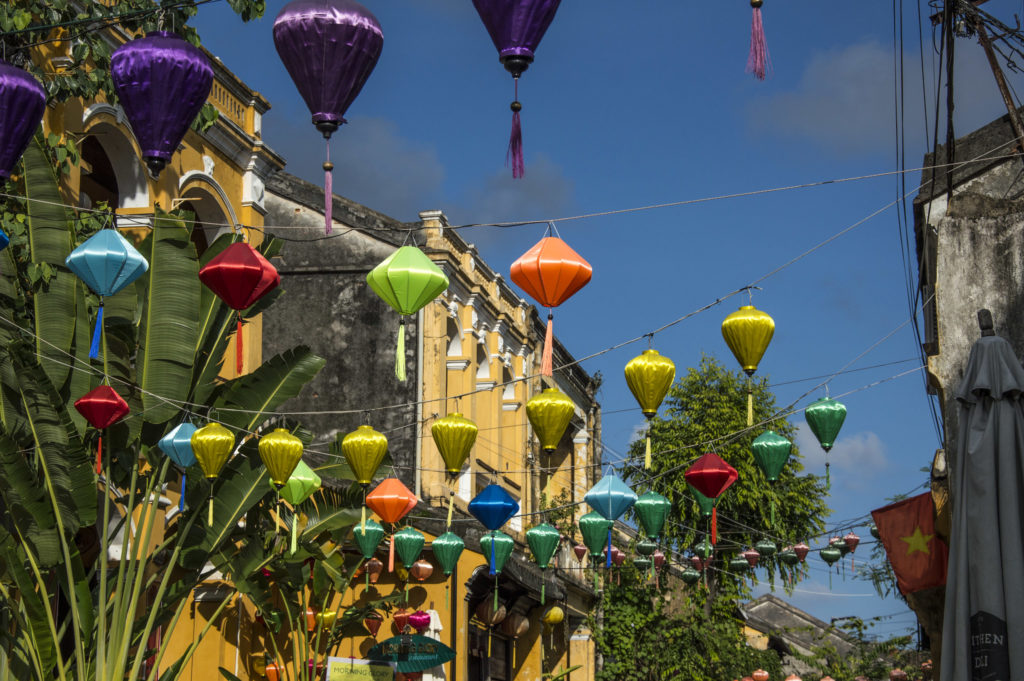Hoi An
Hoi An is a beautiful city in Vietnam’s Quảng Nam Province and since 1999 it’s a UNESCO World Heritage Site. It was a trading port dating from the 15th to the 19th century. Its buildings and its street plan reflect the influences, both indigenous and foreign, that have combined to produce this unique heritage site. We stayed in Hoi An 2 nights, 3 full days.
Where we stayed
Hoian Central Hotel. It’s a 3 star hotel about 6 minutes walk from the city centre. It was more quiet in that side as Hoi An is a tourist attraction and can get very busy. The breakfast there was lovely served by the pool and we did swin a couple of times in the swimming pool. They also have bikes you can get for free and ride in the city.
Tuesday, 23rd October. For the first time we really enjoyed our time on the train. Da Nang was about 2.5 hours away from Hue and the train was passing by beautiful landscapes, coasts, forest, villages.
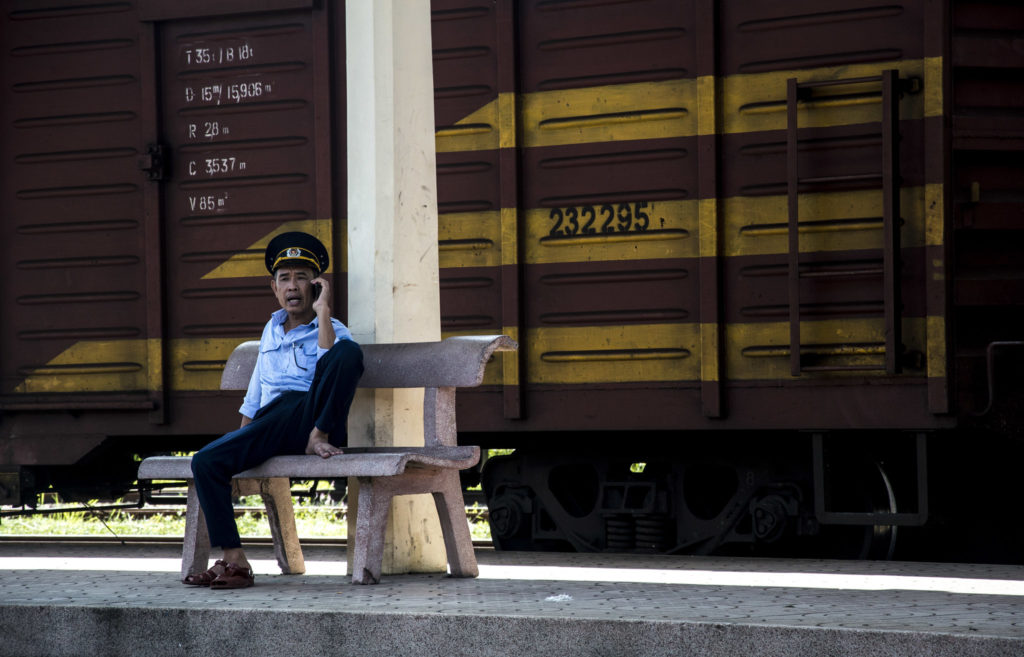


Day 1 in Hoi An
We arrived at the Da Nang train station late noon and we had arranged with the hotel to pick us up from the train station. Da Nang is about 30 kilometres north of Hoi An. Unfortunately, we didn’t see much of Da Nang, only its rail station, the airport and the unique Cau Rong (Dragon Bridge). It’s one of the 6 bridges, a quite recent one (opened for traffic in 2013) that crosses Han river and it represents a yellow dragon.
About an hour later we arrived at the hotel and without wasting any time we started walking towards the ancient town. We immediately fell in love with that place. Hoi An is small enough to wander around on foot and there is no heavy traffic, like in other cities, as some of the streets allow bikes or motorbikes only and some others are pedestrians only. French-colonial houses, pagodas, wood shops and houses, colourful lanterns all become one. I thought it was more like a set up for a romantic movie rather than an actual city.
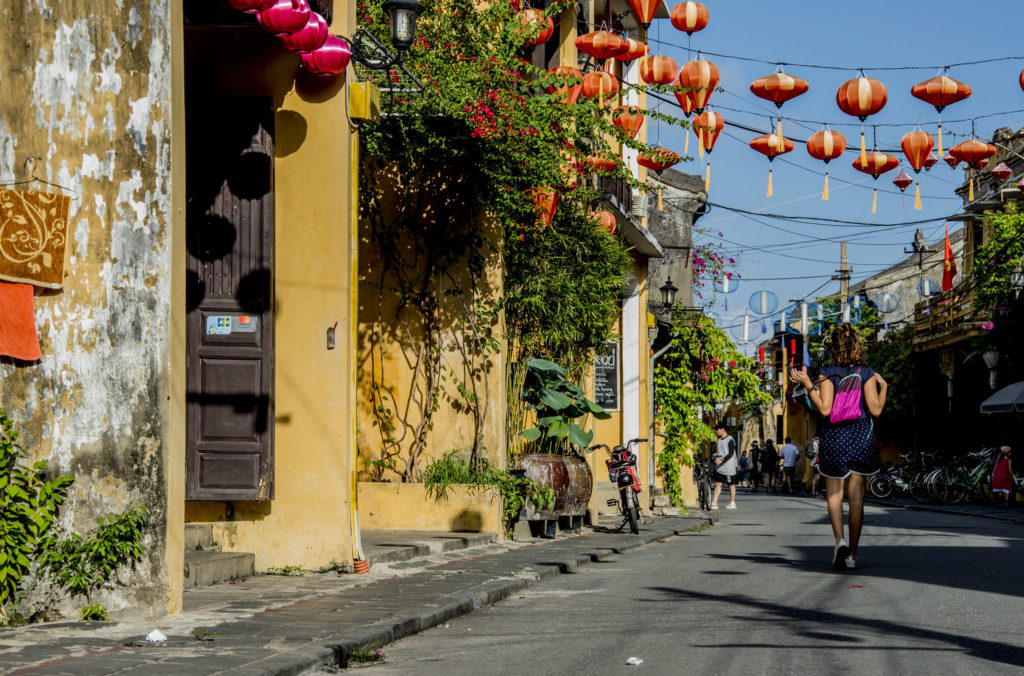
Japanese Covered Bridge
Walking on our hotel’s street (Tran Phu), we arrived at the Japanese covered bridge (Chua, Cau, Cau Hoi An Quang Nam). It’s one of Hoi An’s and Vietnam’s most iconic attractions. The bridge was built between 1593 and 1595 and rumour say that it was created by the Japanese living in Hoi An to reach the Chinese quarter on the other side of the water. It features the sculptures of two dogs and two monkeys, the chinese years of when the building of the bridge began and was completed. Don’t expect to see a big, majestic bridge, it’s a rather small bridge, painted in red and blue colours with wooden pagoda roof, aesthetically harmonised with the rest of the city. The area on the other side of the bridge is lovely too, with small shops and more quiet streets.


For the rest of the afternoon we were just wandering around the streets, we were turning right and left here there, we just wanted to get lost in the colourful streets of Hoi An with the bloomed trees, the small shops and the locals welcoming us with their warm smile. The riverside was beautiful, walking by the edge of the river was very relaxing, there are many cafes and restaurants there, but our favourite stop was at the locals selling fruits and refreshments.


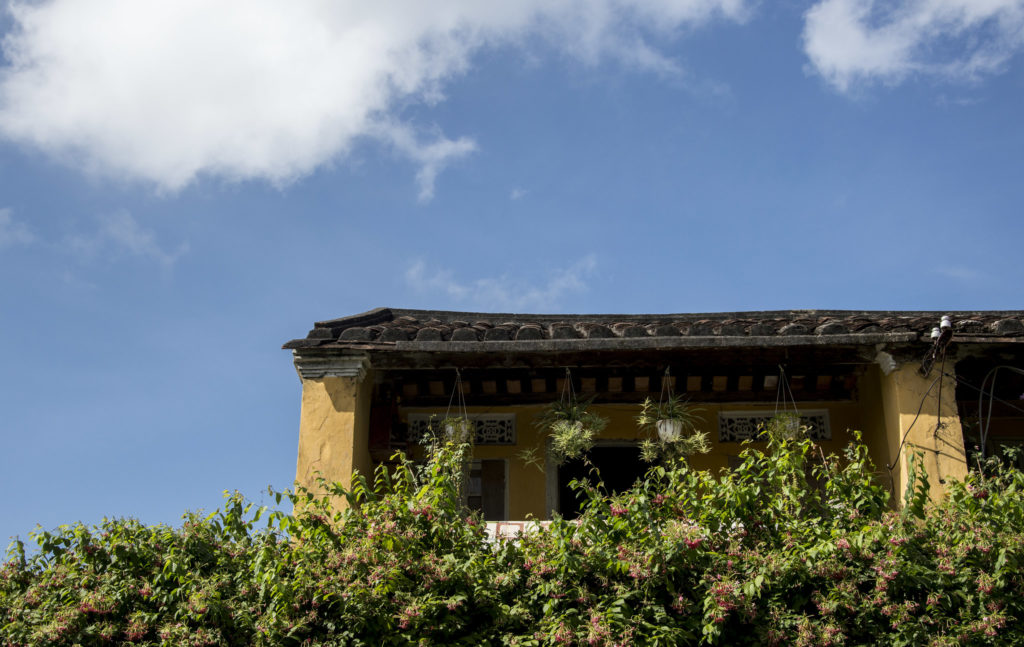

Night Market
That night we went to the Night Market which is open daily 5pm-11pm and it’s located on the small island across the river after crossing the bridge of lights. We met there 3 friends we made at the Halong Bay cruise. It was their last night at Hoi An. The night market was really great, street food stands, clothing, jewellery, accessories, souvenirs, they had everything, as in most of Vietnam’s markets but the colourful lanterns decorating the streets were making everything look much better. We bought there (after KK’s bargain of course) most of the souvenirs we brought to our friends back home.
Riverside is magical all day long but at night they let fire lights on the river while the lanterns on the streets reflect on the river and they create the perfect set up for a walk, dinner or drinks. Life in Hoi An looked much simpler than that of Hanoi, you get the feeling of a big neighbourhood when you are there. The kids were playing in the streets and the small squares, locals were just sitting outside their houses, bumping into the same tourists who try to be one with the locals.

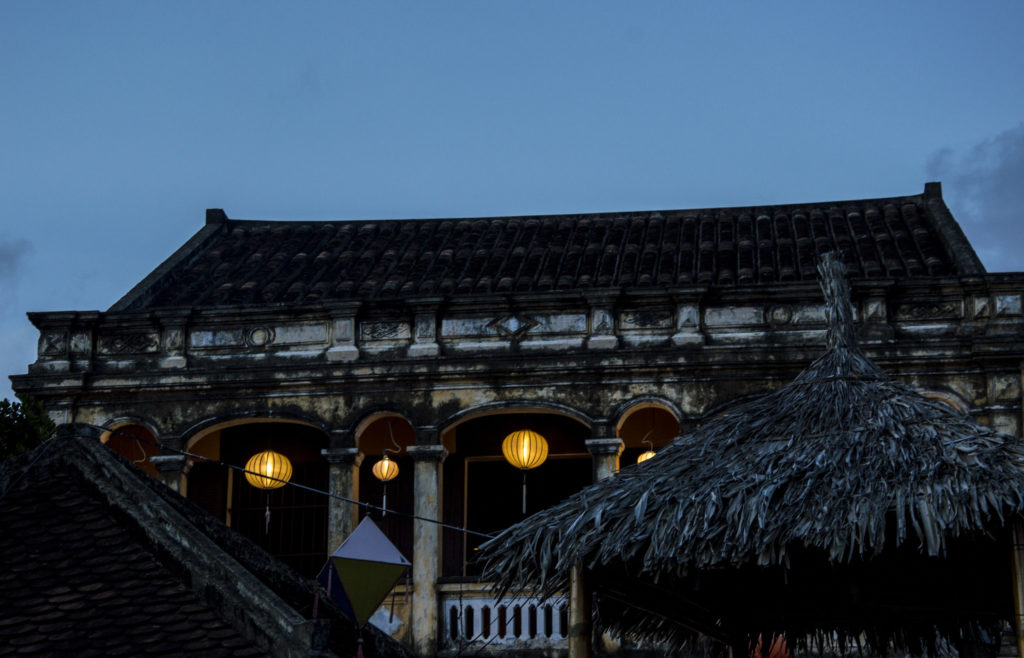
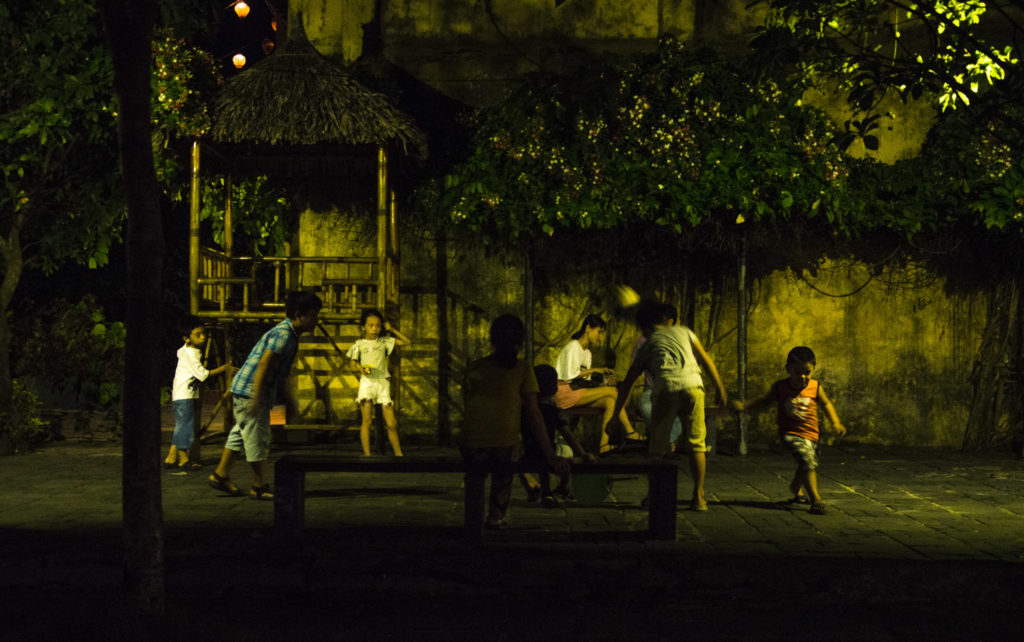
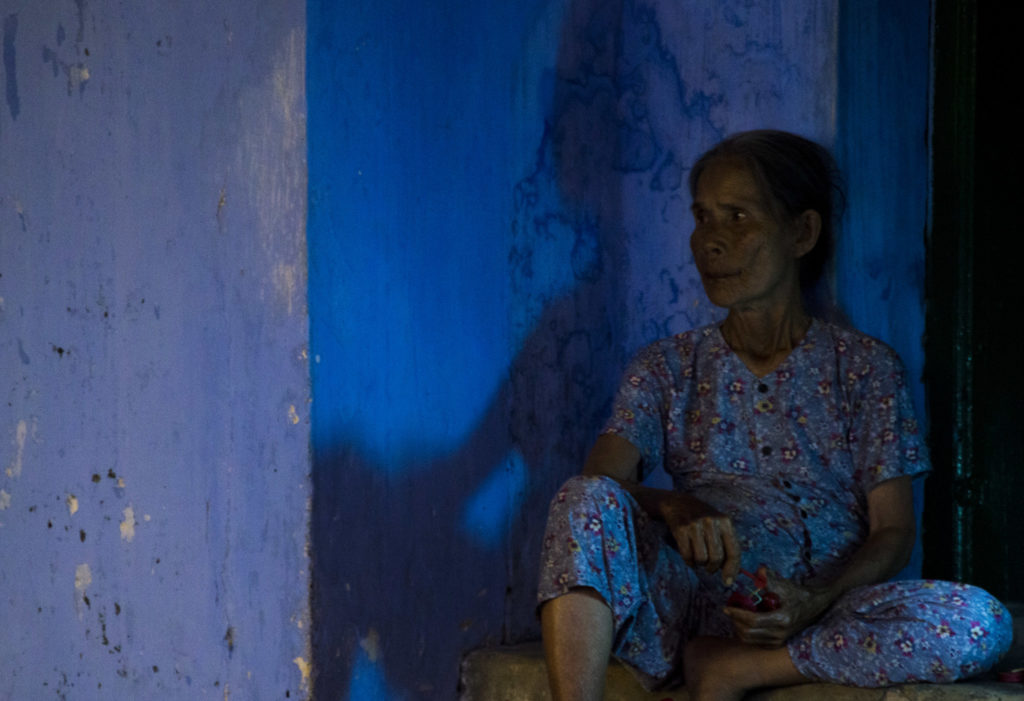
Very happy of what Hoi An had to show us the first day we got back to the hotel and Daphne wouldn’t stop looking at her pinterest to get inspiration of the dress she wanted to have tailored made. Hoi An is popular for its tailors and Daphne wouldn’t leave this opportunity
Day 2 in Hoi An
Assembly Hall of the Chaozhou (Chinese Congregation)
Wednesday, 23rd October. With much anticipation to go back to the Streets of Hoi An, we had our breakfast at the hotel and we were ready for another full day. In just 3 minutes walk from our hotel we made our first stop at the Assembly Hall of the Chaozhou (Chinese Congregation). Built in 1752 this congregational hall with gleaming wood carvings on the walls, altar and the beams. It was very quiet there so we enjoyed our visit.
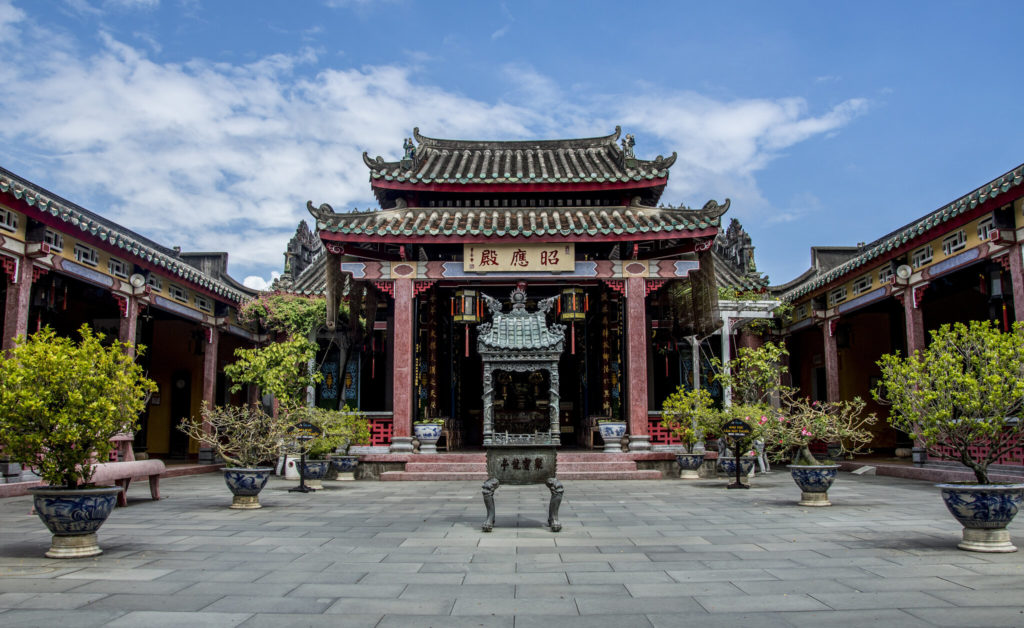
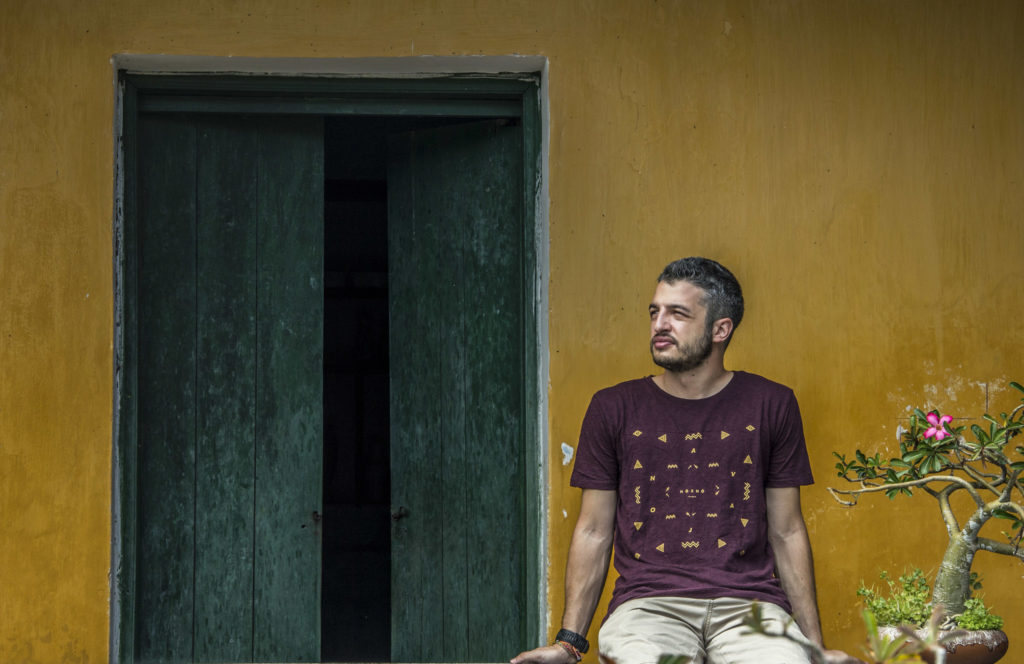
Quan Cong Temple
A few metres further we visited the Quan Cong Temple. This small temple was built in 1653 and it is dedicated to Quan Cong, a Chinese general worshipped as a symbol of loyalty, integrity and justice. The water fountain with dragons made from mosaic in the middle of the temple is very impressive.
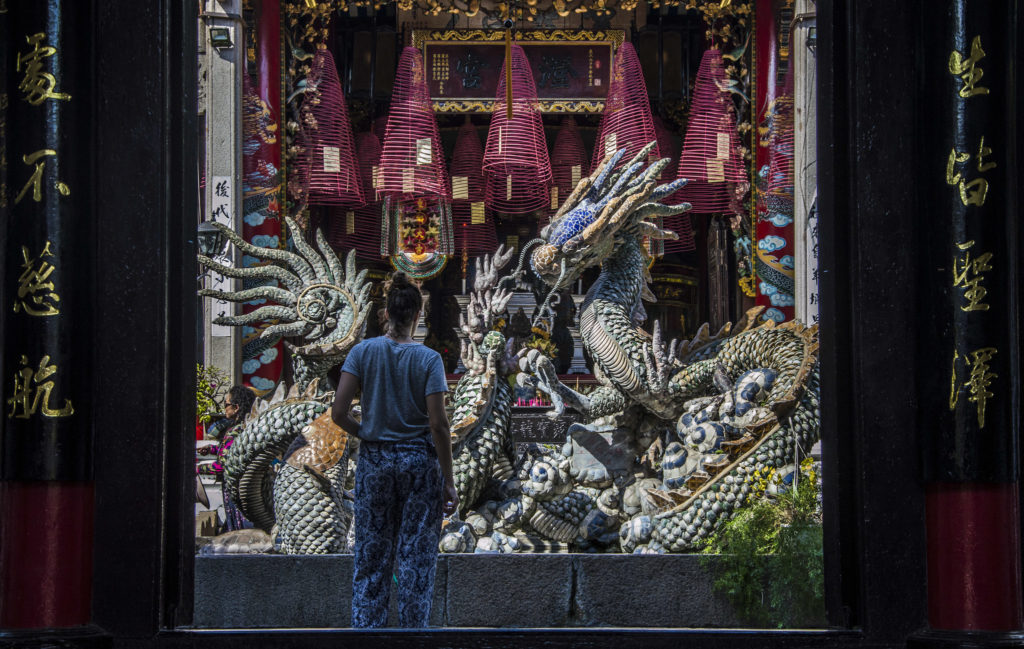
Fujian Assembly Hall
The last temple we visited that day was the Fujian Assembly Hall, a heritage of significant history. This assembly hall was built in 1697 for the Chinese ethnic group to socialise. Later, it became a temple dedicated to Thien Hau, a deity who protects seafarers. The red and green gate stands majestically and it definitely attracts the attention of the visitor.
This temple is much bigger than the rest we visited. It has a big courtyard where you can have some rest under a tree. Symbols of many animals are part of the design and architecture of that temple. There is a very characteristic mosaic fountain, its main figure is a mosaic fish sculpture and around it there are more animals such as phoenix, dragon, turtle, unicorn. Every animal represents a virtue, phoenix for nobility, dragon for power, turtle for endurance and unicorn for knowledge.
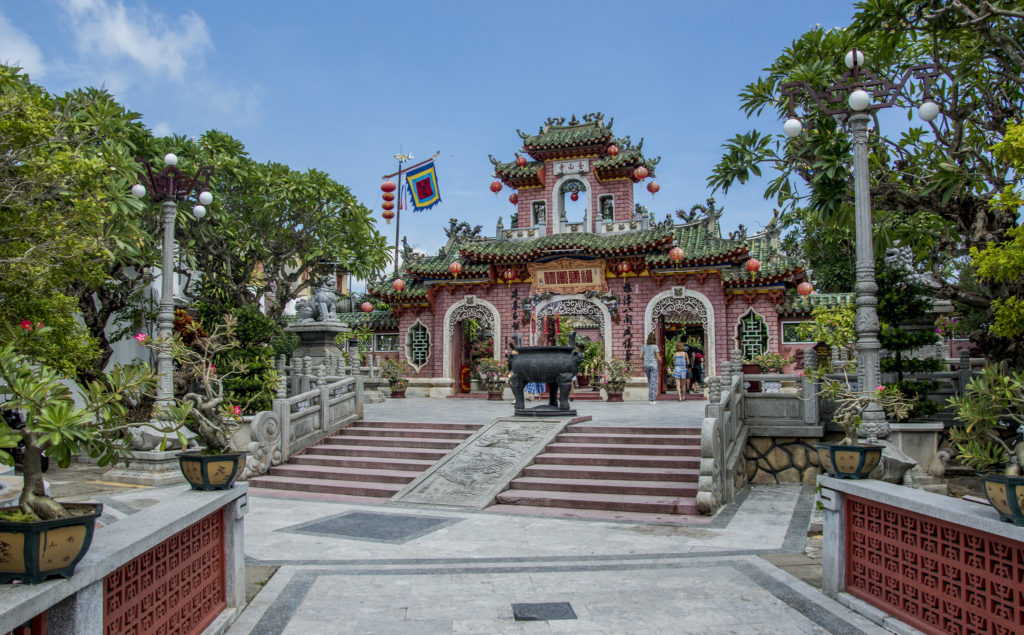
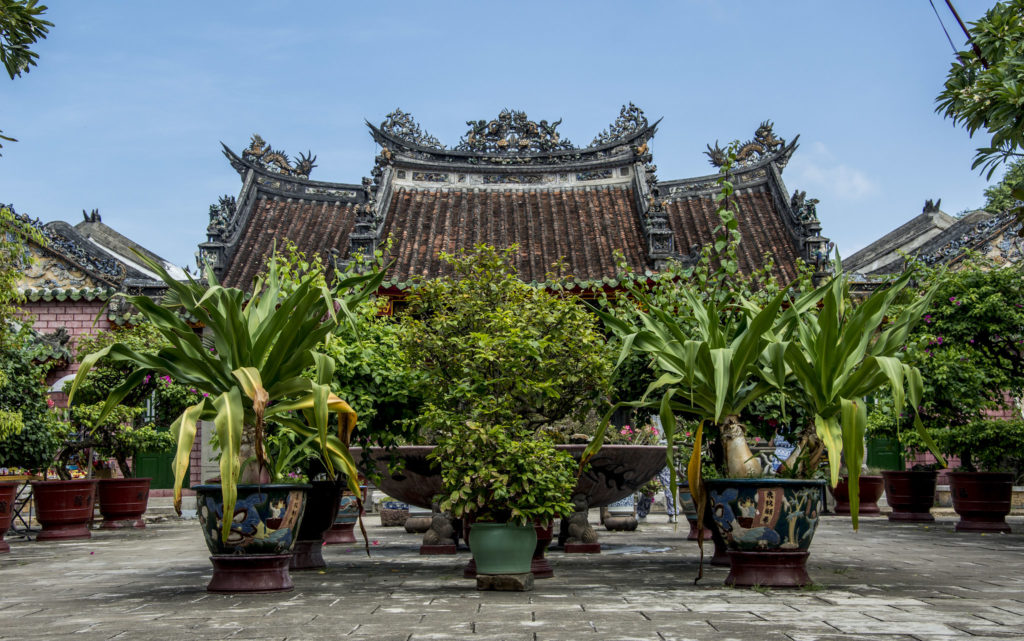
After visiting that temple we decided we had seen enough temples and it was time for our favourite part, the markets. While we were walking towards the central market a local lady selling lanterns approached us and wouldn’t let us leave unless we buy one. So that’s where we got our lantern from. As part of the conversation we had KK asked her if she knows any good tailors and she took us from some small alleys to the cloth market and she introduced us to a friend of hers. That’s where Daphne had a dress and a skirt tailor made in just 1 day. That tailor was much cheaper than others that we asked around, for a long dress and a skirt we paid about 45 euros.
Precious Heritage Art Gallery Museum
Daphne having a biiiig smile on her face and with much anticipation about her dress we visited the central market. You can find there everything, from fresh fruits and fish to souvenirs. Leaving the central market we started walking in the Duong Phan Boi Chau street from the opposite direction of that of the Japanese bridge. It’s more quiet there and these are some really nice art galleries. We stopped at the Precious Heritage Art Gallery Museum. The exhibition about the traditional vietnamese costumes was amazing, you learn so much about culture. There are also some beautiful portraits of vietnamese people which we bought as card postals. That place was one of our favourites.
What to eat in Hoi An
Food time! There are 3 traditional dishes in Hoi An and we loved all of them! The most characteristic one is Cao lau. It’s a local delicacy and available only in Hoi An because the noodles can only be cooked using water from well-hidden ancient Cham wells while fresh greens are sourced from Tra Que Vegetable Village. Apart from the noodles, it also has Chinese barbecued pork slices, crunchy rice crackers, spices, big handfuls of fresh herbs and a small amount of super-tasty broth.
Com Ga, a comfort dish of fragrant rice with shredded village chicken and fresh herbs. This dish’s origin is China and it’s a very common dish in Southeast Asia. In Hoi An they cook the rice in a mixture of spices, chicken stock and turmeric and they use local chicken and these are the secret for a flavoursome dish.
Banh bao vac, the white rose dumplings from our time in Hue. The name derives from the way they look when served. Each dumpling is made by wrapping shrimp or pork filling in flattened rice dough before cooking it in a steamer. It’s served with a dipping sauce made from shrimp broth, lemon and sugar.
There are many great restaurants in Hoi An, in all the places we ate the food was very tasty. We prefer the local/ street – food places than proper restaurants as we know them in Europe and both service and their cuisine was great!
Day 3 in Hoi An
Thursday, 24th October. Our last day in beautiful Hoi An. We had a flight to Siem Reap, Cambodia, to catch that evening at 18.30 so we had only a few hours left. The most important task we had was to collect Daphne’s dress of course. We took the hotel’s bikes and we were riding in the colourful streets of Hoi An. We arrived at Song Hoai Square which was nothing special, no need to walk up to there. However, later on the day, around evening time, there are some street food restaurants on the Cong Nur Ngoc Hoa street towards the Bridge of Lights with many locals eating local delights and drinking local beer. After a stop for a coffee at Cocobox, we jumped on to our bikes and went to the Cam Nam island and from there to the smaller island in Hoi An’s Impression Theme Park. Apparently there are different performances and shows there that start after 7pm, something to check if worth visiting if you are into this kind of art.
We passed by our favourite streets, Nguyen Thai Hoc, Bach Dang and Tran Phu for the last time hoping we will be lucky enough to visit this magical place again in the future.
We were super excited about our next destination though, Angkor Wat here we come!
